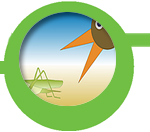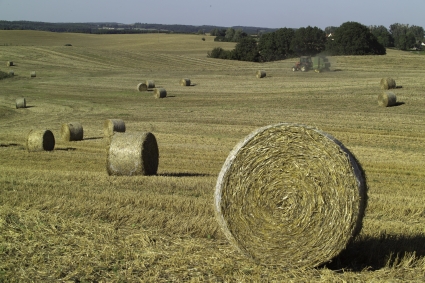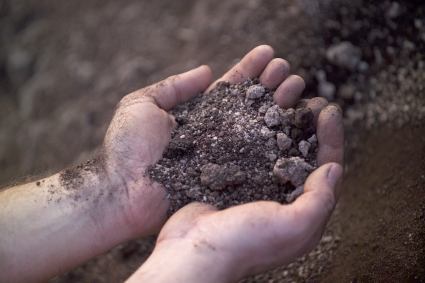Agriculture and Biodiversity
Documents for download:
- Flyer (English
- Flyer (French)
- Draft protocol
- List of interventions
The Request
 The request has been framed after discussions with representatives of the Ministries of Ecology and Agriculture in France, Ministry of Agriculture in Austria, DG Environment and DG Agriculture.
The request has been framed after discussions with representatives of the Ministries of Ecology and Agriculture in France, Ministry of Agriculture in Austria, DG Environment and DG Agriculture.
The question asked to the Network of Knowledge is "which types of landscape/habitat management are effective at maintaining or restoring populations of natural pest control agents?"


THE BACKGROUND, RATIONALE and OBJECTIVES
The need to provide resources to 9 billion human beings in the near future, whilst altogether preserving ecosystem services and biodiversity and facing climate change poses new challenges to agriculture. As described by Bianchi & van der Werf (2005), intensive agricultural practices, using broad-spectrum pesticides, have triggered a strong decline of biodiversity, leading in turn to a degradation of regulatory ecosystem services such as pest regulation by natural enemies.
Decreasing pesticides (quantity, spectrum) means that pests should be more numerous and diverse. But decreasing pesticides should also help restoring populations of natural enemies which will act against these pests. The challenge is thus to effectively support the populations of natural enemies so that their recovery is large enough to provide an efficient regulatory service (FAO CD16). As natural enemies need shelters, food, reproduction areas and so on, non-crop habitats can play an essential role in maintaining such populations (and other biodiversity as well) (Bianchi & van der Werf 2005). Moreover, relying on local ecosystems to effectively provide natural pest control allows farmers not only to decrease costs on pesticides but also those linked to release of commercially captive-bred bio-control agents.
Sustainable agriculture is a major challenge in Europe as almost 50% of its territory is dedicated to this activity, but the knowledge about how to use ecosystem services is still scattered and often poorly accessible. The goal of this work is to contribute to the synthesis of knowledge concerning agrobiodiversity and its related ecosystem services by assessing the effectiveness of interventions aiming at manipulating habitat or landscape features in order to maintain or support natural (indigenous) population of pest control agents.
USING THE NETWORK OF KNOWLEDGE:
A call to the Net work of Knowledge as well as direct contacts with experts has allowed to identify key players in this topic:
- Cambridge University (W.J. Sutherland ) has just started a similar work using an evidence-based approach called "synopsis of evidence". We are collaborating to make the two projects complementary
- INRA, the French National Institute for Research in Agronomy, has developed many research programmes in this realm. It belongs to ELN-FAB (see below) and it is closely in touch with the GRAB (Regional Group for Biological Agriculture) who works with farmers to put recommendations into practice and detect innovations from field-based experiences
- ELN-FAB is the European Network of Functional Agrobiodiversity which is probably the most closely related to this topic. We are still waiting for their answer and hope they will be able to join in order to relay our request to the experts, act as a functional hub and demonstrate how useful is such a structuration of the community of knowledge holders at the European level. Much help has also be provided by Alter-Net
- A range of experts, practitioners...
THE APPROACH CHOSEN:
The approach chosen to synthesize knowledge is initially that of a systematic review (www.environmentalevidence.org). We will include the Synopsis of evidence (www.conservationevidence.org ) at the core of our synthesis. Given our limited resources and short deadlines, we will follow all the steps of a systematic review but will probably have to stop at the stage of a systematic map and may have to narrow the range of examination of the literature as there will possibly be a huge range of papers extracted. We will try at least to report about the quantity of knowledge, establish a structured knowledge base, and if possible highlight knowledge gaps and opportunities for subsequent meta-analysis which would lead to full systematic reviews. We are trying to build up sound foundations so that the project may attract extract funding if the topic and approach was of interest to some.
AGENDA
- May 2012: refining the request
- June 2012: establishing collaborations, refining roles and exchanges, starting to write the draft protocol
- July 2012: developing search equations with INRA, extracting literature. Concertation with Cambridge about journals, knowledge base, methodologies
- August 2012: organizing extracted literature. Start writing summaries for Synopsis of Evidence. Finalise draft protocol and organize peer-review
- September: WORKSHOP 27-28 September with expert
Access the detailed agenda and goals (coming soon); click "Contact" below to express your interest in attending) - October – December: write draft review and keep on writing the logbook of the entire experience
WHO IS DOING WHAT?
Knowledge Coordinating Body
- Barbara Livoreil, Fondation pour la Recherche sur la Biodiversité, 195 rue St Jacques, 75013 Paris, France.
- Peter Zulka, Environment Agency Austria (EAA), Spittelauer Lände 5, 1090 Vienna, Austria
Scoping Group and Expert Search group (searches)
- Sophie LePerchec, Documentaliste, Information scientifique et technique - INRA Centre de Recherche de Rennes, DV-IST Erist - Délégation à l'expertise scientifique collective, à la prospective et aux études (DEPE) - Bibliothèque UMR SAS, 65 rue de Saint-Brieuc 35042 Rennes cedex
- Anne-Sophie Grenier, Documentaliste, INRA, UMR 1349 IGEPP, F-35653 Le Rheu, France
- James Hutchison, Conservation Evidence Group, Zoology department, Cambridge University (for the Synopsis of Evidence)
Advisory Group and Working groups
- See flyer for more details
- Flower strip working group (chair: Peter Zulka)
March 2012: discussion of the review question with the one of the requesters (Lukas Weber from the Austrian Ministry Agriculture and Forestry, Environment and Water Management).
Mai 2012: consultation with experts, refining the terminology, exploring reviews on the subject
August 2012: exploring methodologies of systematic reviews.
September 2012: compiling a database from several sources (comprehensive search from INRA, references from Cambridge Conservation Science Group, additional searches in SCOPUS and Biosis Previews), containing 1820 data records of which 385 were duplicates.
October 2012: Paper selection based on titles and abstracts of the full reference database led to 295 references suitable for the review on flower strips and 196 references potentially suitable for additional inclusion.
November 2012: The methodology of the review is being documented. The papers included in the review are extracted and a database template for each paper is filled. Papers suitable for a quantitative meta-analysis are selected.
Contact and Useful links
To ask for more details about this case study, to express interest in contributing, to send us papers or grey literature or contribute with traditional or practitioner's knowledge, please contact us at:
WP3 Agriculture contact: Barbara Livoreil
Collaboration for Environmental Evidence
Conservation Evidence




